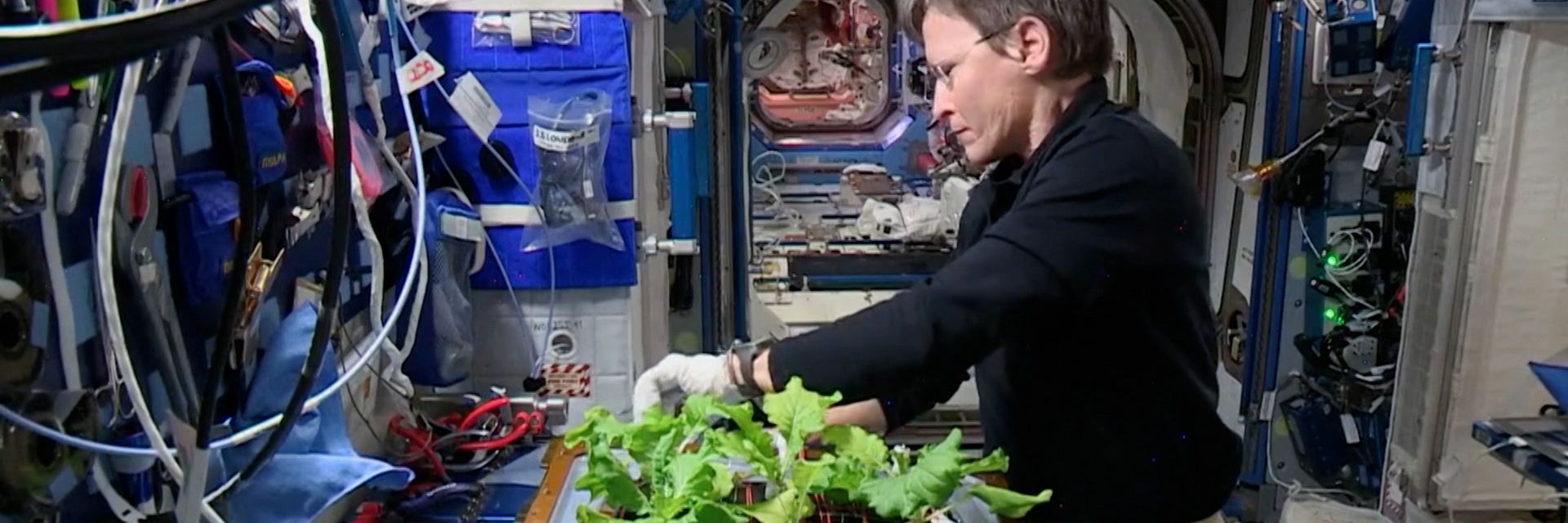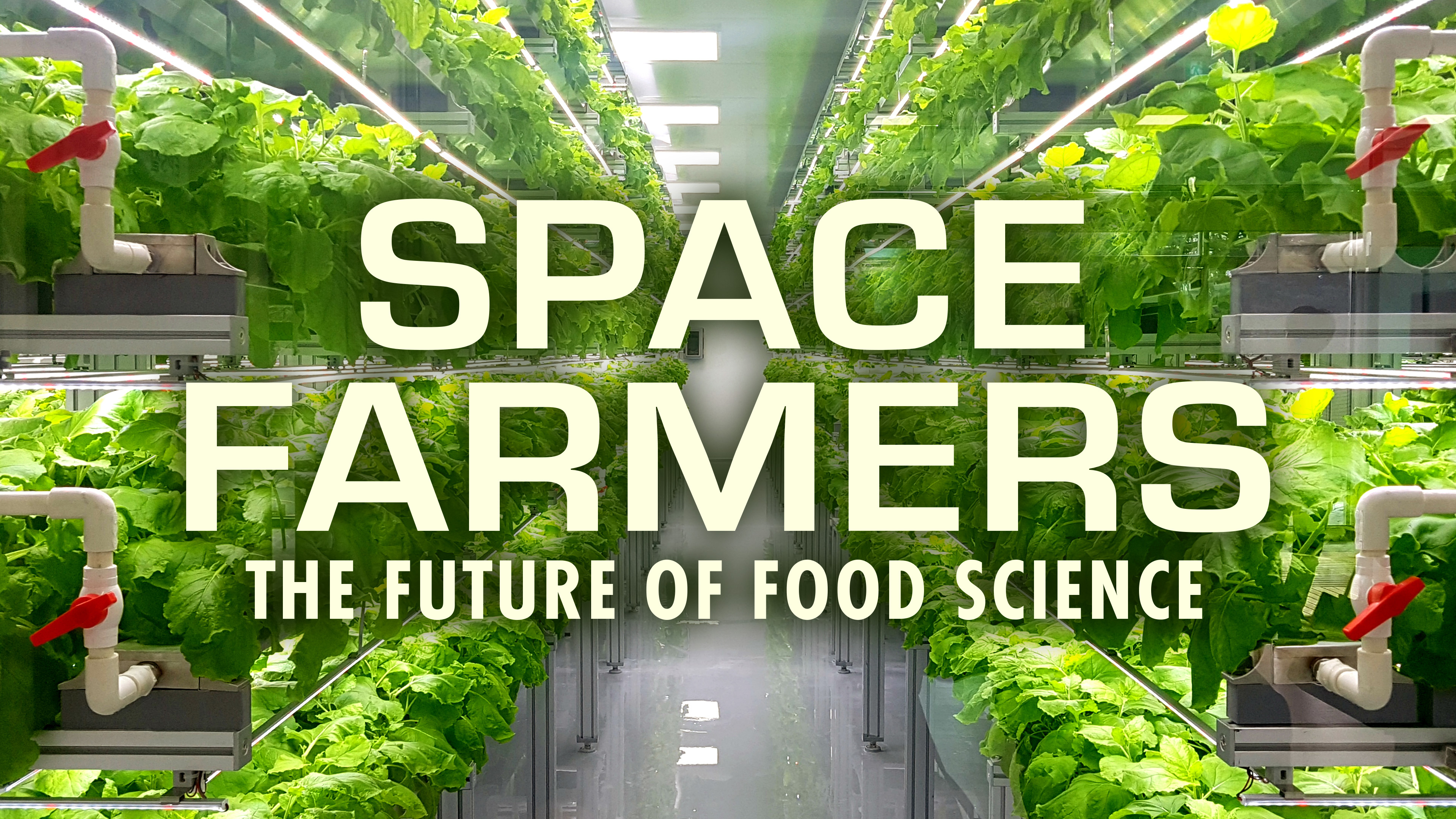Meals in space have come a long way since the early days of Tang and even less appetizing options.
◊
Once upon a time, American astronauts drank a powdered, orange-flavored beverage called Tang aboard their spacecraft. Though manned space missions are less of a spectacle than they were in the 1960s and ’70s, Earth’s orbit remains busy with satellites, including the International Space Station (ISS). Feeding the astronauts who live there has come a long way from the early days of Tang.
Soviet cosmonaut Yuri Gagarin is famous for being the first person in space, and he was also the first person to grab a bite while he surveyed the Earth below. During a 108-minute flight, he sucked a paste of beef and liver through a tube instead of waiting until the landing to satisfy his appetite.
Shortly after Gagarin’s first meal in space, NASA would begin a tradition of serving its astronauts a hearty meal of steak and eggs before each lift-off. It wouldn’t be long before American astronauts would start having meals while orbiting Earth.
Check out this tasty, two-episode MagellanTV documentary to see how space food has led to groundbreaking innovations in feeding ourselves right here on Earth.
Food aboard the NASA Missions of the ’60s and ’70s
Dining options aboard the ISS and space shuttles improved significantly after the first few flights of the ’60s. In the early days of the Mercury program, food choices were so limited as to demonstrate astronauts’ fortitude. Bite-sized cubes and freeze-dried foods weren’t exactly delicious, and they were also difficult to manage. Astronauts had to squeeze their partially edible meals through doubly unappetizing tubes. Dried foods were difficult to rehydrate, and crumbs would float into sensitive instruments.
When the first Gemini mission launched in 1964, spaceworthy food had improved in terms of convenience and variety. The original bite-sized cubes had a new coat of gelatin to reduce crumbling. Better packaging allowed for optimal freshness and easy access. This new wave of space food offered options as ambitious as shrimp cocktail and even dessert, like butterscotch pudding.
The Apollo program took astronauts to the Moon, and also provided a singular leap in the quality of space food along the way. The most notable advancement: The Apollo astronauts were the first to use hot water in space, which allowed them to prepare genuinely nutritious meals, such as beef stew or chicken and rice. Hot water not only diversified meal options, but it also made rehydration easier for freeze-dried foods.
Food on Space Stations
Space food experienced a significant improvement in quality when Skylab launched in 1973. As the first American space station, this precursor to the ISS offered a variety of options to enjoy in a genuine dining area with a table around which to sit (the table exhibited footholds to keep astronauts from floating away). The first ever spaceworthy refrigerator contained many of the whopping 72 menu items aboard the station. Astronauts could enjoy soups, stews, casseroles, cereals, and ice cream.
Fun fact: Skylab plunged into the Indian Ocean on July 11, 1979 – less than two weeks before the release of Ridley Scott’s masterpiece, Alien.
Space food has continued to evolve over the past few decades. Today, astronauts on the ISS have access to over 200 standard menu items. Shuttles also bring regular deliveries of fresh produce – welcome treats for astronauts to eat within the next few days. Less perishable options include beef steak, scrambled eggs, dried apricots and other fruits, and that good old-fashioned shrimp cocktail.

Astronauts enjoying pizza on the ISS in April 2019 (Credit: NASA/Nick Hague, via Wikimedia Commons)
Life in space isn’t easy. Every organism on Earth adapts to environments with atmospheric pressure, magnetic fields that offer protection from solar radiation, and adequate food sources. But, in the near-vacuum of space, astronauts have to bring all the important stuff with them in order to survive.
So, it only makes sense to provide them with nutritious, reasonably palatable meals for their voyages -- whether close to home on the ISS or on much longer journeys in the future. After all, it's hard to do good science on an empty stomach.
Ω
Title Image: Screenshot from Space Farmers: The Future of Food Science


